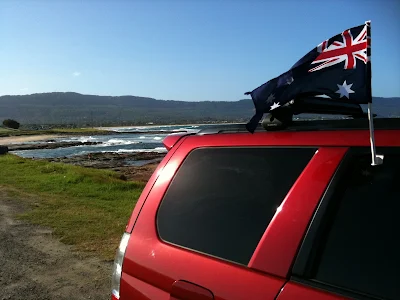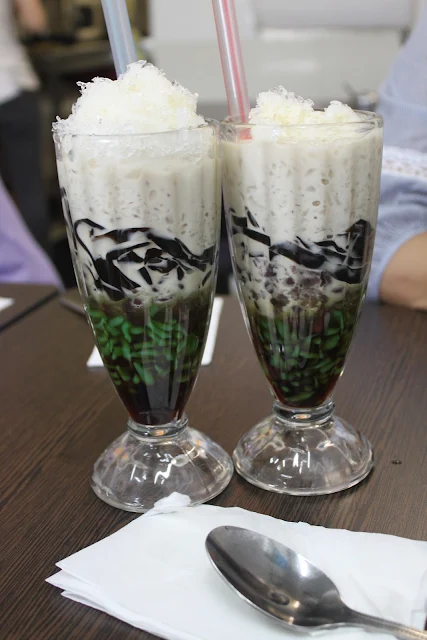A refreshingly cold drink on the hottest January day in about twenty years. This concoction, called the three flavours, is an ice shaving mix drowned in milk, black jelly strips and green coloured crunchy bits made from mung beans (cendol). Cendol is ubiquitous on the street food stalls in South-east Asia from Vietnam to Indonesia. A dessert that also serves as a quick teatime snack, it is a necessary tool of defence to cool down the palate, body and temperament, especially when temperatures soar above 30 degrees Celsius. It is also highly effective when taken with curries and deep fried foods. The concoction has to be stirred thoroughly before preferred through a large sized straw, to allow the bits and pieces to be slurped through, accompanying the drink portion. We had our share of cendol this time at Albee's along the main strip of Beamish Street in Campsie, south-west of Sydney CBD.

Joyce's Mum, Rosie, had just returned from Penang, Malaysia and we reckoned we should check out some parts of greater Sydney that was hardly frequented. I was fascinated by this unassuming mural (above) painted on a back wall beside a side street off Marrickville Road in the multi-ethnic suburb of Marrickville. The musical instruments depicted on this mural reminded me of some of the traditional instruments used in multi-racial Malaysia, except for the one with a duck shaped handle. You can spot Indian drums, Chinese pipas and Malay violins. The vegetables offered on display in Marrickville (below) seemed to be wilting under the harsh sunlight, but contribute to the variety of stir-fried dishes often complemented with condiments, garlic and ginger on the wok.
One of my favourite supper or lunch snacks back in my hometown of Penang Island is the Cantonese-inspired
wat tan chow hor, soaking in a delicious egg-based gravy poured over an aromatic mixture of prawns, cut
choy sum vegetable stalks/ leaves and stir fried wide flat rice noodles (
hor fun). For this dish to have a kick, it has to be eaten whilst warm and with vinegar-soaked cut green chilli rings - and the wok used to stir fry the noodles must have been going for several hours. Home kitchens rarely produce a mean and really rewarding quality of this culinary creation. In my mind, this chow hor is associated with a fun trip with Papa and brothers, the kids in pyjamas, going for a special treat in a car in the latter part of the night, for a quick meal in Georgetown before turning into bed.
Mum makes the best mee rebus, and interpretations of this South Indian inspired dish can vary with different crunchiness of the battered shrimps, the smoothness of the potato-based gravy and the spiciness of the dish.
Rebus is to simmer, and yellow Hokkien noodles are preferred, with fried shallots used as the garnish.
The experience is heated up with an optional dollop of paste made from pounded chillies and shrimp. Above image, the dish made at Ginger and Spice in the Chatswood Chase in Sydney's upper north shore.






































